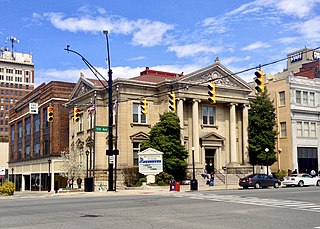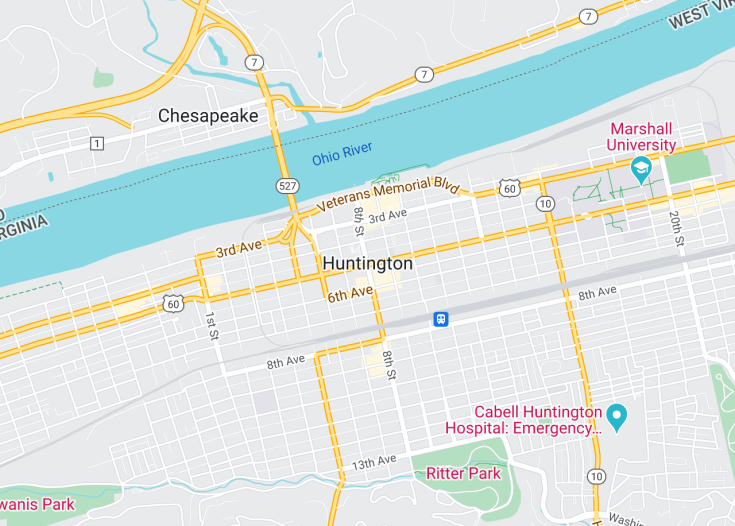Nestled along the Ohio River, Huntington, West Virginia epitomizes the spirited charm of Appalachia. Renowned for its vibrant cultural scene, Huntington houses Marshall University, numerous museums, and the heralded Huntington Museum of Art. The city thrives with festivals and events, reflecting its rich heritage and diverse community. Attractions like the Heritage Farm Museum and Village provide a touch of historical insight, while the bustling Pullman Square offers a taste of modern-day entertainment. Huntington represents an engaging blend of old and new, making it a distinctive destination for travelers.
Before heading to Huntington, ensure to check the calendar for local events or festivals, which are central to experiencing the city’s lively community spirit.
Consider a guided tour at the Heritage Farm Museum and Village for a comprehensive insight into the Appalachian way of life throughout history.
Top things to do & see in Huntington
Select the following sights and activities to discover best tickets and tours available in Huntington.
Huntington: The Jewel of the Ohio River
| Country | West Virginia (USA) |
| Time in Huntington | GMT-5 |
| Language spoken | English |
| Population | 47,215 (U.S. Census Bureau 2020) |
| Currency | U.S. Dollar (USD $) |
| Airports |
|
Huntington, nestled along the majestic banks of the Ohio River and framed by scenic Appalachian foothills, is not merely a city—it’s a testament to dynamic history, culture, and robust industrial growth. Founded in 1871, it swiftly became a pivotal hub of the railroad industry, propelling West Virginia’s coal into the vast markets of the east. Today, steeped in its rich heritage, Huntington stands proudly as a beacon of educational excellence, with Marshall University fostering a vibrant academic community.
Huntington’s historical byway resonates through its splendid Victorian architecture, notably along the beautiful Ritter Park. The city marries natural beauty with heritage, highlighted at the Huntington Museum of Art who’s trails meander through lush greenery married to sculptures. Beyond its serene parks, the city roars with enthusiasm during university-led sports events, drawing large local crowds and nurturing a strong sports culture.
The city’s economy, once heavily reliant on manufacturing and rail transport, has diversified over the years. Health care, education, and technology have emerged as significant sectors, signaling Huntington’s adaptability and resilience. Its strategic transport infrastructure, including the vital CSX Transportation rail lines and proximity to I-64, ensures that Huntington remains a crucial player in regional logistics and business.
Huntington also thrives as a cultural powerhouse of West Virginia with festivals such as the vibrant Huntington Music and Arts Festival and the monthly Art Walk, these events encapsulate the city’s souls, fostering a profound community spirit and showcasing local talents. Furthermore, culinary trails through the city offer a taste of both traditional Appalachian flavors and modern cuisine, reflecting the city’s evolving palate.
In embracing both its storied past and its forward-looking future, Huntington exemplifies the spirit of American resilience and community. It’s more than a city in West Virginia—it’s a place where history, culture, and modernity interweave to paint a vibrant tableau of American life.
Where is Huntington?
Huntington is located in the western part of West Virginia, on the banks of the Ohio River, directly across from Ohio.
Distances:
| Route | Distance by car | Time by car |
|---|---|---|
| Charleston to Huntington | 50 miles | 50 minutes |
| Parkersburg to Huntington | 107 miles | 1 hour 40 minutes |
What is Huntington famous for?
Huntington is renowned for its vibrant arts scene, Marshall University, and its historical significance in the railroad and coal industries, playing a crucial role in the economic development of West Virginia.
History
Pre-1800s: Indigenous Lands
Before the establishment of Huntington, the area was primarily occupied by the Shawnee and other Native American tribes. These communities thrived along the banks of the Ohio River, utilizing the fertile land for agriculture and the abundant resources for hunting and fishing. The region played a significant role in the various indigenous cultures for centuries before European exploration and settlement began to encroach upon their territories.
1871-1900: The Foundation and Early Growth
Huntington was officially founded in 1871 when Collis P. Huntington, the railroad tycoon for whom the city is named, chose the locale as the western terminus for the Chesapeake & Ohio Railway. The city quickly became a vibrant hub for the railroad industry, which spurred rapid growth and development. By the end of the 19th century, Huntington had established itself as a significant industrial and transportation center in the region.
1901-1950: Industrial Boom and Diversification
During the first half of the 20th century, Huntington’s economy diversified beyond the railways. The city saw significant growth in manufacturing, particularly in steel processing, woodworking, and the chemical industry. The population swelled as jobs attracted workers from across the United States, and the urban landscape began to take shape with the construction of substantial civic and commercial buildings.
1951-2000: Decline and Recovery Efforts
The latter half of the 20th century was challenging for Huntington, as it was for many American cities reliant on heavy industry. The decline of the manufacturing sector led to economic difficulties and a decrease in population. However, the city began to focus on recovery efforts, including revitalization of the downtown area, investment in public transport, and the promotion of the arts and culture, which laid the groundwork for a rebirth in community pride and economic stability.
2001-Present: Economic and Cultural Renaissance
In the 21st century, Huntington has experienced a renaissance, both economically and culturally. Efforts to revitalize the downtown have been successful, with new businesses, art venues, and public spaces that attract both residents and tourists. The city has also focused on health and education, with expansions at Marshall University and investments in medical research facilities. Today, Huntington is recognized for its vibrant arts scene, its commitment to public health, and its ongoing economic development initiatives.
Visit Huntington
What to see and do in Huntington
Visitors to Huntington will find a rich blend of historical, cultural, and outdoor attractions. Begin your exploration at the Heritage Station, a converted train depot now housing unique shops and cozy cafes. Art enthusiasts should not miss the Huntington Museum of Art, which offers an impressive collection and lovely walking trails.
- Ritter Park is perfect for those seeking outdoor activities, featuring extensive walking paths, tennis courts, and a beautiful rose garden.
- The Keith-Albee Theatre, a stunning historic theater, offers a range in performing arts entertainment, from concerts to plays.
- For a deeper dive into local history, the Museum of Radio and Technology fascinates with its vast collection of vintage radios and broadcasts equipment.
Annual Events in Huntington
Huntington hosts several engaging events throughout the year, drawing both locals and tourists. The highlight includes the Marshall University Marathon in November, celebrated for its scenic course and vibrant community support. Summer sees the vibrant Huntington Music and Arts Festival, showcasing local musicians and artists. Another significant event, the ChiliFest, happens in September, where chili cook-offs take the spotlight alongside live entertainment.
Best time to visit Huntington
The best time to visit Huntington is during the spring and fall months. Temperatures are pleasant, and the scenery is at its most beautiful, making it ideal for exploring the outdoor attractions and participating in local events.
Is Huntington worth visiting?
Huntington, West Virginia, offers a compelling blend of culture, history, and outdoor pleasures that can appeal to a diverse range of visitors. Its revitalized downtown area buzzes with activities and is the heart of its cultural scene, presenting a stark contrast to the quiet, lush parks surrounding the city. However, visitors should be aware that, like many small cities, the pace might be slower and some modern amenities less available. Overall, Huntington provides a rich, rounded experience especially worthwhile for those interested in American industrial history and Appalachian culture.









